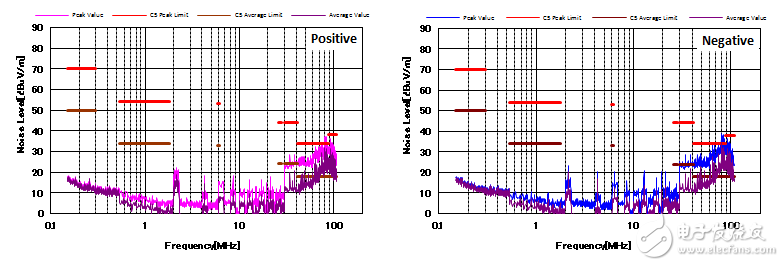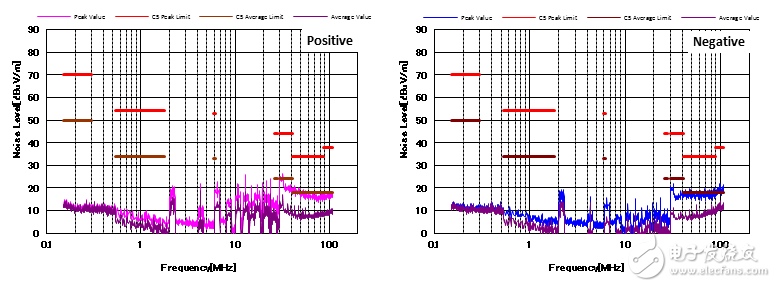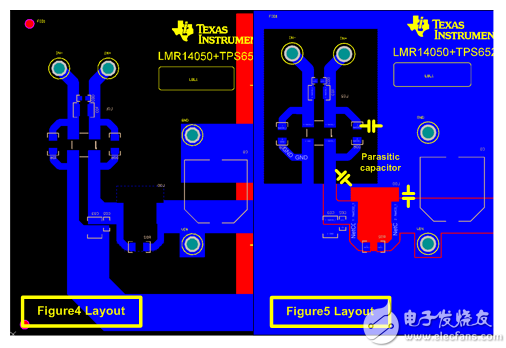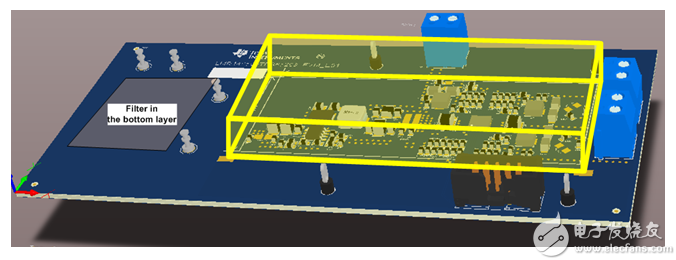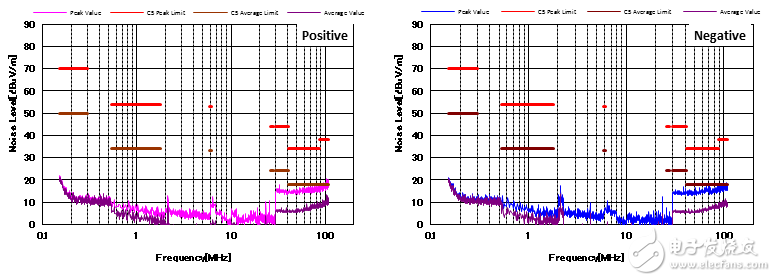Author: TI engineer Vental Mao The electromagnetic interference (EMI) problem in design has always been a headache, especially in the automotive industry. To minimize electromagnetic interference, designers often reduce the noise source by reducing the loop area of ​​the high di/dt and the switching slew rate when designing schematics and drawing layouts. However, sometimes no matter how careful layout and schematic design is used, it is still not possible to reduce conducted EMI to the required level. This is because noise depends not only on circuit parasitics but also on current intensity. In addition, the switching on and off actions generate discontinuous currents, and these discontinuous currents create voltage ripple on the input capacitors, which increases EMI. Therefore, it is necessary to adopt some other methods to improve the performance of conducted EMI. This article mainly discusses the introduction of input filters to filter out noise, or increase the shield to lock the noise. Figure 1 EMI filter schematic diagram Figure 1 is a simplified EMI filter that includes a common mode (CM) filter and a differential mode (DM) filter. In general, the DM filter is mainly used to filter noise (DM noise) less than 30 MHz, and the CM filter is mainly used to filter noise (CM noise) from 30 MHz to 100 MHz. However, in fact, these two filters have a certain inhibitory effect on the EMI noise of the entire band. Figure 2 shows an input lead noise with no filter, including both positive and negative noise, and annotating the peak and average levels of these noises. Among them, this system under test mainly adopts the chip LMR14050SSQDDARQ1 to output 5V/5A, and supply the follow-up chip TPS65263QRHBRQ1 while outputting 1.5V/3A, 3.3V/2A and 1.8V/2A at the same time. Both chips operate at a switching frequency of 2.2MHz. In addition, the conductive EMI standard shown in the figure is CISPR25 Class 5 (C5). For more information on this system, please refer to the application note SNVA810. Figure 2 Noise characteristics of the C5 standard (without filters) Figure 3 shows the EMI results after adding a DM filter. As can be seen from the figure, the DM filter attenuates the mid-band DM noise (2MHz to 30MHz) by approximately 35dBμV/m. In addition, the high-frequency noise (30MHz to 100MHz) also decreased, but still exceeded the limit level. This is mainly because the DM filter has a limited ability to filter high-frequency CM noise. Figure 3 Noise characteristics under C5 standard (with DM filter) Figure 4 shows the noise characteristics after adding CM and DM filters. Compared with Figure 3, the increase of the CM filter reduces the CM noise of approximately 20dBμV/m. And EMI performance also passed the CISPR25 C5 standard. Figure 4 Noise characteristics of the C5 standard (with CM and DM filters) Figure 5 shows the noise characteristics of the CM and DM filters with different layouts, where the filters are the same as in Figure 4. However, compared with Figure 4, the noise in the entire band is increased by about 10dBμV/m, and the high-frequency noise even exceeds the average value of the CISPR25 C5 standard. Figure 5 Noise characteristics under C5 standard (with CM and DM filters, different layouts) The difference in noise results between Figure 4 and Figure 5 is mainly due to PCB layout differences, as shown in Figure 6. In the wiring of Figure 5 (right side of Figure 6), a large area of ​​copper (GND) surrounds the DM filter and forms some parasitic capacitance with the Vin trace. These parasitic capacitances provide an effective low-impedance path for the high-frequency signal bypass filter. Therefore, in order to maximize the performance of the filter, all copper around the filter needs to be removed, as shown on the left side of Figure 6. Figure 6 Different PCB layouts In addition to adding filters, another effective way to optimize EMI performance is to add shields. This is because the metal shield connected to GND can prevent noise from radiating outward. Figure 7 shows a method for placing the shield. The shield just covers all the components on the board. Figure 8 shows the EMI results after adding filters and shields. As shown in the figure, the noise in the entire band is almost eliminated by the shield and the EMI performance is very good. This is mainly because the long input leads, which are equivalent to antennas, couple a lot of radiation noise, and the shield just blocks them. In this design, intermediate frequency noise is also coupled to the input lead in this way. Figure 7 PCB 3D model with shield Figure 8 Noise characteristics under C5 standard (with CM, DM filter and shield) Figure 9 also shows the noise characteristics of the filter and shield. Different from Fig. 8, the shield in Fig. 9 is a metal box that encloses the entire circuit board and only the input leads are exposed. Despite this shield, some radiated noise can still bypass the EMI filter and couple to the power lines on the PCB, which will result in worse noise characteristics than in Figure 8. Interestingly, the noise characteristics of the high-frequency band in FIG. 4, FIG. 8 and FIG. 9 (same layout and wiring) are almost the same. This is because after the EMI filter is added, the high frequency band radiation noise that can be coupled to the input line almost disappears. Figure 9 Noise characteristics of the C5 standard (with CM, DM filter, and shielded metal box) In summary, adding EMI filters or shields can effectively improve EMI performance. But at the same time, the layout of the filter and the placement of the shield must be carefully considered.
Connector brand: JST, MOLEX, HIROSE, JWT, DEPHI, TE, Deutsch, Yazaki, Sumitomo, these are very popular
Conector type: board to board connector, wafer connector
Yacenter is professional factory, specialize in wire harness in transportation, medical, house applicance and so on.
We are one of menbership of WHMA with ellecellent team, and pass UL, TS, CE certificate.
We develope high-tech engineering, prototyping, and qualify manufacturing at very competitive pricing for connector system.
Connector System,Cable Harness,Wiring Harness Wire,Custom Auto Wiring Harness Dongguan YAC Electric Co,. LTD. , https://www.yacentercns.com

